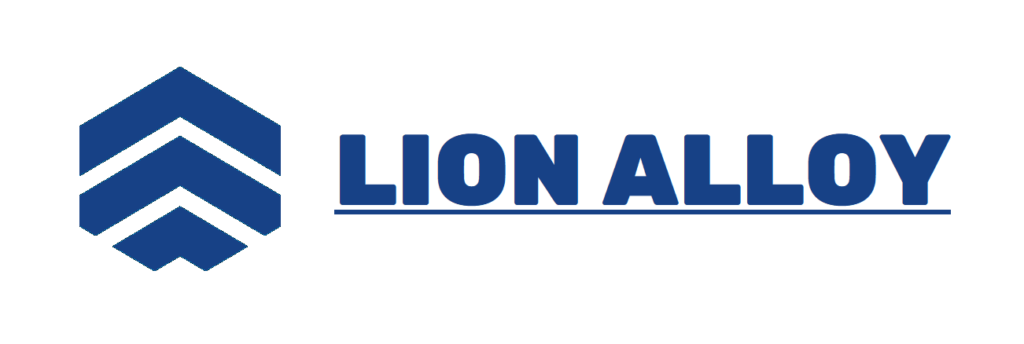Introduction
NIMONIC 80A is a nickel-based superalloy specifically designed for high-temperature applications, particularly in aerospace, gas turbine engines, and industrial processes. This alloy’s unique combination of mechanical properties, resistance to oxidation and corrosion, and exceptional strength at elevated temperatures makes it a preferred choice for components that must perform reliably under extreme conditions. This article will explore the specific attributes of NIMONIC 80A that make it unmatched in high-temperature applications, detailing its properties, uses, advantages, and the processes involved in its fabrication.
1. Understanding NIMONIC 80A
1.1 Composition and Properties
NIMONIC 80A consists primarily of nickel, with chromium and other alloying elements to enhance its performance at high temperatures. Its composition contributes to its remarkable mechanical and thermal properties.
Tableau 1: Composition chimique de Nimonic 80A
| Élément | Pourcentage (%) | Fonction |
|---|---|---|
| Nickel | 46.0 | Métal de base fournissant la ductilité et la résistance |
| Chrome | 20.0 | Améliore la résistance à l'oxydation |
| Fer | 5.0 | Offre une force supplémentaire |
| Molybdène | 1.0 | Augmente la résistance à haute température |
| Cobalt | 3.0 | Améliore la résistance au fluage |
| Titane | 1.0 | Fournit la force et stabilise la structure |
| Aluminium | 0.5 | SIDA dans la résistance à l'oxydation |
| Carbone | 0.05 | Améliore la dureté et la force globale |
| Autres | Équilibre | Comprend le manganèse, le silicium, le phosphore, le soufre |
1.2 Key Properties
NIMONIC 80A is characterized by a variety of properties that are crucial for high-temperature applications:
1.2.1 Mechanical Properties
NIMONIC 80A boasts high yield strength and tensile strength, even at elevated temperatures.
Tableau 2: Propriétés mécaniques de Nimonic 80A
| Propriété | Valeur |
|---|---|
| Limite d'élasticité (MPa) | 600 |
| Résistance à la traction ultime (MPa) | 860 |
| Allongement (%) | 30 |
| Dureté (HB) | 200 |
| Module d'élasticité (GPA) | 200 |
1.2.2 High-Temperature Stability
NIMONIC 80A maintains exceptional stability at high temperatures, making it ideal for applications in gas turbine engines and other high-heat environments.
Table 3: High-Temperature Strength Retention
| Température (° C) | Limite d'élasticité (MPa) | Résistance à la traction ultime (MPa) |
|---|---|---|
| 600 | 550 | 800 |
| 700 | 500 | 750 |
| 800 | 450 | 700 |
| 900 | 400 | 650 |
2. Applications of NIMONIC 80A in High-Temperature Environments
Due to its unique properties, NIMONIC 80A is utilized in various high-temperature applications across several industries.
2.1 Aerospace Industry
The aerospace sector relies heavily on NIMONIC 80A for engine components, turbine blades, and combustion chambers.
Table 4: Aerospace Applications
| Composant | Application |
|---|---|
| Lames de turbine | High-stress, high-temperature areas |
| Chambres à combustion | Confinement du gaz |
| Engine Casings | Intégrité structurelle |
2.2 Power Generation
NIMONIC 80A is integral in gas turbines and steam turbines, where high performance and efficiency are paramount.
Table 5: Power Generation Applications
| Composant | Application |
|---|---|
| Turbines à gaz | Energy generation |
| Turbines à vapeur | Thermal efficiency enhancement |
| Échangeurs de chaleur | Heat transfer in power plants |
2.3 Industrial Applications
The alloy also finds utility in industrial applications that operate under harsh conditions, such as chemical processing equipment and furnace fixtures.
Table 6: Industrial Applications
| Composant | Application |
|---|---|
| Accessoires de fournaise | Composants exposés à des températures élevées |
| Équipement de traitement chimique | Resistance to corrosive environments |
| Équipement de pétrole et de gaz | Durabilité dans des conditions extrêmes |
3. The Advantages of Using NIMONIC 80A in High-Temperature Applications
Using NIMONIC 80A for high-temperature applications presents several advantages over other materials.
3.1 Superior Strength and Durability
NIMONIC 80A maintains its mechanical integrity under extreme conditions, ensuring long-lasting component performance.
3.2 Resistance to Oxidation and Corrosion
The alloy’s high chromium content provides excellent resistance to oxidation and corrosion, extending the life of components in harsh environments.
Table 7: Comparison of Oxidation Resistance
| Alliage | Taux d'oxydation (mm / an) | Niveau de performance |
|---|---|---|
| Nimonique 80a | 0.25 | Excellent |
| Inconel 625 | 0.30 | Bien |
| Stellites 6 | 0.50 | Modéré |
3.3 Fabrication Flexibility
NIMONIC 80A can be easily fabricated using various methods, including forging, machining, and welding, allowing manufacturers to tailor components to specific applications.
3.4 High Creep Resistance
NIMONIC 80A’s composition grants it excellent creep resistance, crucial for parts that endure long-term exposure to high temperatures and stress.
Table 8: Creep Resistance Comparison
| Alliage | Creep Rate (mm/1000 hours) | Niveau de performance |
|---|---|---|
| Nimonique 80a | 0.001 | Excellent |
| Inconel 718 | 0.002 | Bien |
| Waspaloy | 0.005 | Équitable |
4. Manufacturing Processes for NIMONIC 80A Components
The fabrication of NIMONIC 80A components requires specialized manufacturing processes to leverage its unique properties effectively.
4.1 Forging
Forging NIMONIC 80A enhances its mechanical properties through grain refinement. The process involves heating the material to its forging temperature and mechanically deforming it to achieve the desired shape.
Table 9: Forging Parameters for NIMONIC 80A
| Paramètre | Valeur recommandée |
|---|---|
| Température de forgeage (° C) | 900 - 1200 |
| Rapport de déformation | 3: 1 |
| Taux de refroidissement | Contrôlé |
4.2 Machining
Machining NIMONIC 80A requires specific tools and techniques to overcome the challenges posed by its toughness and work-hardening properties. Carbide tools and appropriate cutting speeds are essential.
Table 10: Machining Parameters for NIMONIC 80A
| Paramètre | Valeur recommandée |
|---|---|
| Vitesse de coupe (m / min) | 30-50 |
| Taux d'alimentation (mm / révérend) | 0.1-0.3 |
| Profondeur de coupe (mm) | 1-5 |
4.3 Welding
Welding NIMONIC 80A requires specialized techniques and filler materials to maintain the integrity of the weld and the properties of the alloy.
Table 11: Welding Processes
| Processus | Description |
|---|---|
| Soudage à l'arc sous gaz tungstène (GTAW) | High precision and control |
| Gas Metal Arc Welding (GMAW) | Faster process, but less control |
| Plasma Arc Welding | Suitable for thin-walled sections |
5. Conclusion
NIMONIC 80A forged parts are unmatched for high-temperature applications due to their superior mechanical properties, resistance to corrosion and oxidation, and flexibility in fabrication processes. Its robust performance in aerospace, power generation, and industrial sectors highlights the versatility and reliability of this alloy in extreme environments. By utilizing NIMONIC 80A, manufacturers can achieve high efficiency and durability in their components, ensuring long-term operational success in demanding applications.
The ongoing development in material sciences and engineering processes will continue to enhance the capabilities of NIMONIC 80A, further solidifying its place as a leading choice for high-temperature applications. As industries evolve and demand higher performance materials, NIMONIC 80A stands out not just for its current capabilities, but for its potential to adapt and excel in the future.


